We are currently studying BJTs in electronics I and I am a bit confused on the notation of the current, specifically the collector current here. Throughout this chapter they will swap \$I\$ and \$i\$ to seemingly refer to the exact same thing. The book itself doesn't explain it either. There seems to be no consistency. Why wouldn't it just be \$I_{C1}\$ and \$I_{C2}\$? I understand that usually lower case refers to instantaneous voltage or current, but when solving this example, for instance, \$I_c\$ and \$i_c\$ are simply different examples used to solve the \$i_c = I_{s}e^{V_{BE}/V_T}\$ equation to give the \$V_{BE}\$ needed for the design choice. I cannot find any other info on this so I figured this was a good chance to ask here.
Asked
Active
Viewed 104 times
2 Answers
3
Uppercase i is some unchanging, constant reference value. For example, it might be used for the DC bias. Whatever is is referring to may change depending on context, but whatever it is, it does not change with time.
Lowercase i is i(t) and varies with time (instantaneous).
DKNguyen
- 54,733
- 4
- 67
- 153
3
I is for large signal (eg. bias) values, and i is used for small-signal (eg. time-varying as @DKNguyen says).
Usually you will be dealing with linear equations for i(t) and with nonlinear equations for I.
Spehro Pefhany
- 376,485
- 21
- 320
- 842
-
Thank you for your response. Is there any reason that it would be used here even if is not a function of time? The question suggests that the lower case i is a trait of the transistor. – ModularMan Apr 04 '20 at 21:19
-
Ah, I see what you mean. Just looks like sloppy use of notation to me. I wouldn't worry too much about it. You could consider it ic(t) from a curve tracer used to measure the transistor characteristics (in this case vbe(t)). – Spehro Pefhany Apr 04 '20 at 21:41
-
Okay, that clears a lot up. Thank you very much! – ModularMan Apr 04 '20 at 22:21
